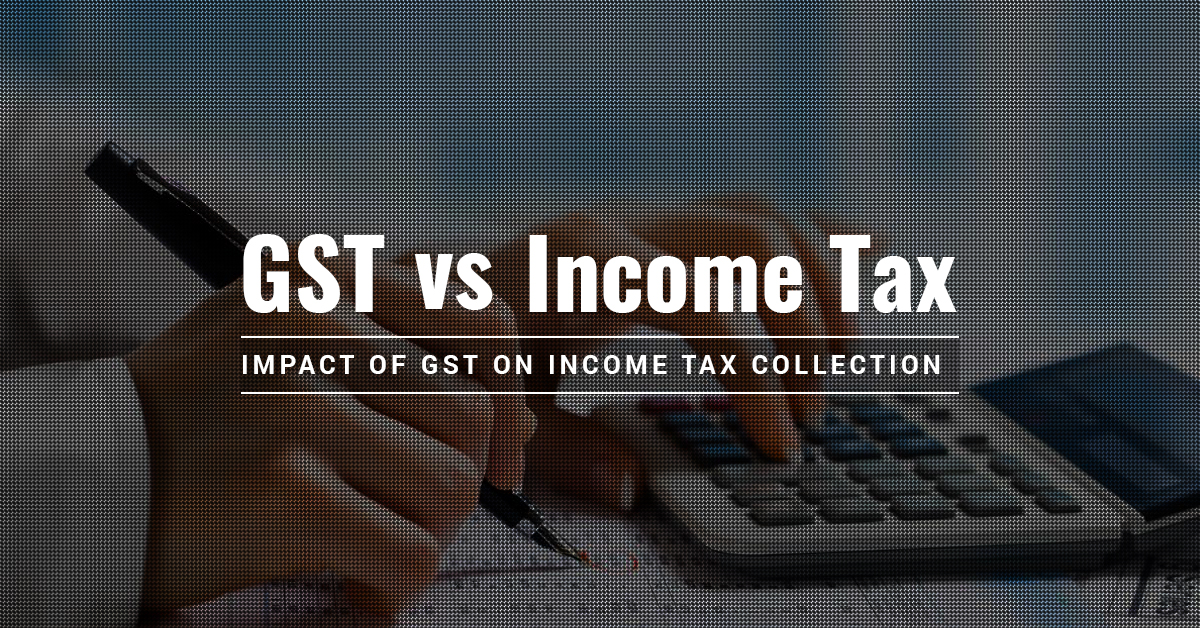GST (Goods & Services Tax) is an indirect, consumption-based tax which was implemented in India from July 2017 to replace all the existing indirect taxes, including sales tax, service tax and others. Income Tax has a very old history in India. It is a direct tax levied on the income/profit earned by Indian citizens. Both direct and indirect taxes are crucial for the economy of our country. Let’s find out how GST and income tax affect each other and what are the similarities and differences between GST and income tax.
Goods & Services Tax
The goods and services tax is a value-based tax, similar to the VAT, and is levied on goods and services that are produced and sold for local consumption purposes. The GST is paid at every stage of the supply cycle by involved businesses but the ultimate cost is borne by the consumer. Some countries, including India, have implemented GST with Input Tax Credit (ITC) mechanism to avoid duplicate payment of tax on the same supply.
GST in India is levied on most of the consumable goods and services. GST India has five tax slabs – 0%, 5%, 12%, 18%, and 28% – for different category of supplies. A few supplies, such as petrol and fuel, have been exempted from GST.
Income Tax in India
An income tax is a direct tax levied from individuals and taxpayers on the gross income or profits made by them in a financial year. Income tax is also imposed on the profits/revenue of businesses but not on supplies made by them. Some countries have certain criteria or threshold for tax eligibility. In most countries, income tax is directly deducted from the salary of employees by their employers and is paid to the IT department. Income tax is paid by residents as well as non-residents who make an income in India.
Income tax is levied on income earned from salary, any other source, house/property, capital gains, business and other professions.
Contents
How does GST impact Income Tax in India?
The government has launched GST with a dedicated digital system, called GST Network (GSTN), to manage all GST related things online from a single portal. This also makes it simple for businesses to maintain proper tax records and calculate their annual income correctly. This, in turn, makes it easy to calculate their income tax liability.
Income tax department can also easily figure out the tax liability of a particular person or business by comparing their returns for the details of total turnover to find out any discrepancy and catch tax evaders.
Before GST, many businesses used to report a different stock value in their VAT returns as compared to their IT returns, usually with the aim to commit tax fraud or for maintaining a better credit score. However, GSTN makes it easier for income tax department to match the returns and calculate the correct income tax liability of a particular person/business. This, in turn, will boost the collection of taxes.
GST may also result in a possible increase in the income tax for the service provider. GST has input credit mechanism which reduces the cost of goods which in turn increases the profit for the seller.
Similarities between Income Tax and GST
One major similarity between income tax and GST is that both are borne by the consumer. We pay income tax on our income/profits and GST on the use of various sectors, services and products such as restaurants, theatres and more.
GST vs Income Tax
Here are the differences between these two major tax systems.
- GST is levied on consumption while Income tax is levied on profit/income.
- GST is an indirect tax while IT is a direct tax.
- GST is a multi-stage tax levied at each stage of the supply chain while income tax is levied once a year on the gross income minus eligible savings (as per 80C).
- GST returns are filed quarterly/monthly depending on the return type while income tax return is filed annually.
- Income tax has four slabs (0, 5, 20, and 30) while GST has five tax slabs (0, 5, 12, 18, and 28).
- The annual threshold for income tax payment is INR 2,50,000 while businesses with an annual turnover of over INR 20,00,000 need to register for GST.
- GST (indirect taxes) is known to have more effect on economically weaker sections while income tax mainly affects middle and high-class citizens.
- The overall tax collected through GST is higher than what is collected through income tax.
- GST has the provision of input tax credit (ITC) which allows taxpayers to claim a refund of the tax, however, income tax has no such provision.
Conclusion
The introduction and digitization of GST will not only ensure a stronger indirect tax system but also it will strengthen the existing income tax system by providing a reliable database for income tax department to check the collective revenue and find tax discrepancies, if any.






